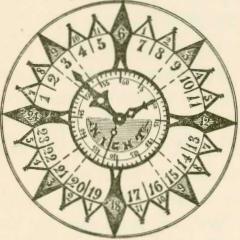TEACHING GEOGRAPHY. 129
But in the new system of arithmetic, where the tables are sufficient to express any quantity in whole numbers, very little use will be made of fractions: they will only occupy three pages of the text book.
A CLASS IN GEOGRAPHY is before us. They
are to study Great Britain. Why choose one of their number as a scriber They have already read its description in their text books. A table is before them with a pile of brown molding sand. They must first spell out the name of the country, and, as they proceed, all the important words of the lesson are spelled and written by the scribe on the blackboard. They are to study the surface, with its mountain range, its plains, lakes and rivers, and its indented seacost, by molding all these in the sand. Each pupil contributes some fact on these topics, and gives his factexpression by shaping the pile of sand.
The general form of Great Britain is first made in outline. Then this outline is modified by molding its edges into capes and bays, and its interior into mountains and plains.
If a mistake is made, either in describing any part, or in molding its form, the class take a vote to see if a majority can correct the fault. In one lesson they are able to construct a complete map in relief on the table. They have touched almost every topic in geography. Where sand would not serve their purpose, they have helped themselves out with modeling clay.
Once they would have been merely taught that "an island is a portion of land surrounded by water." But these children take a lump of clay and are taught to make a clay island on
the table. This table has a slightly raised rim, so that they can actually cover it and surround their island with water. The table itself may be painted blue, to represent water, and then the land is appropriately shown by the brown sand.
A NEW ARITHMETIC
will be one of the necessary things in a social order where both economy and common sense have a voice in deciding affairs.
The primitive races of men counted on their fingers and in that way the decimal or system of tens came to be the basis
of arithmetic. But the best mathematicians of the present time assert that ten is not at all the best number to count by as a basis. It can only be divided once without fractions. A square is an essential basis of all surface measure. But you cannot divide ten by four. Again, the trinity is everywhere 'in mathematics. But three is not a factor in ten.
We adopt twelve as a radix, because it is a perfect number. It has twice as many factors as ten. It is divisible by two, by three, by four and by six. It admits of the natural sub-divisions by halves, thirds, quarters and squares. And its adoption will do away with the awkward mass of fractions which now take about one-fourth of the text book.
The scale requires twelve figures or digits, and
WATCH OR CLOCK
DIAL. FACE.
